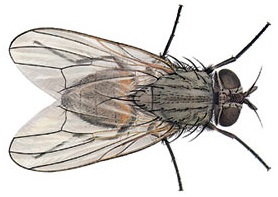

House Flies
fly types, pest control, best fly traps, how to get rid of flies


fly types, pest control, best fly traps, how to get rid of flies
Fly traps can be an excellent way to prevent the infestation of different types of flies in your home, or deal with a situation that is already ongoing. Remember that in order to get rid of flies, you first must take away the things that brought them there in the first place. Flies are programmed through genetics to seek out sources of food and heat in order to breed and survive as a species. A vast majority of different types of flies, and especially those that will enter your home and breed, are those that are looking for rotting foods, flesh, or otter materials to feed upon. This can be quite a nuisance in your kitchen and other areas of your home that may, at times, be home to rotting fruits, vegetables and other types of foods.
Start by cleaning both the inside and outside of your home to ensure that you have taken away all of their food sources. Leave potentially rotting foods in airtight containers and always make sure to close the lids on your garbage cans outside. Check the cracks and holes in your home for areas where flies might be able to enter. All it takes is for one to get into your home and lay eggs for you to have a larger infestation on your hands. Once you have done this, you can set fly traps up to snatch up the rest of the flies that are present in your home.
Since most flies are attracted to sources of heat, ultraviolet light that is used in many fly traps, and even standard light bulbs will attract, and eventually kill the flies in your home. This works best when they are placed in an already dark environment, so that they will be the only things that are attracting the flies. You do not want your fly trap to compete with other elements in the home. Try setting your ultraviolet fly traps next to sources of food at night so that they will be attracting to the light and warmth of the bulb.
Fly zappers are among the most commonly used fly traps. These differ from other types of traps because a zapper does not just trap the fly and let it die off - it does the killing of the fly itself. They will electrocute flies as soon as they fly into the trap, ensuring that they are gone for good. This is not a fly trap that is usually placed in the home, and is instead meant to be used outdoors.
Pheromones are commonly used to attract flies into traps. Pheromones are sexual attractants that bring flies in search of a breeding partner into the trap. They will be lured into a trap that they are not able to get out of, and will slowly die off in the trap. Remember that the life span of a fly is not very long and in most cases all flies will be dead within 48 hours of entering the trap. Remember to empty your pheromone trap periodically, as they become less effective when littered with dozens of dead flies.
Fly strips are also commonly used to attract flies. You can make them yourself or buy them in stores. They work by attracting the fly to a sticky strip that will not let them fly away with the promise of food. Often times these strips will utilize granulated sugar or honey to attract the flies who are in search of food. Remember to remove the strips every so often for a fresh strip. Fly strips are often hung from the ceiling or other high areas in the home. Remember that if you use a homemade fly strip, you might want to place a jar or bucket underneath it to catch any falling residue.
Remember that the most important part of shoeing away flies in the home is not giving them a place or environment to live in that will allow them to continue to live. As soon as you take away their food and heat sources, they will move on, but until that happens, it is always a good idea to utilize fly traps. They also work as excellent prevention methods to keep flies from coming back in numbers after you have removed them from the home.
Got rid of stink bugs in your house? Read about how to prevent stink bugs from coming back next year.